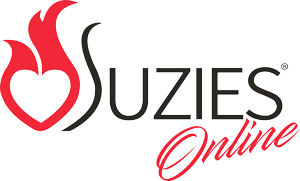Sexual orientation and gender identity are integral aspects of personal identity, shaping how individuals perceive themselves and interact with the world. For many people, exploring and understanding their sexual orientation or gender identity can be a deeply personal and sometimes challenging journey. In this blog post, we'll provide resources and support for individuals navigating questions of sexual orientation and gender identity, including discussions on LGBTQ+ topics and terminology, to promote understanding, acceptance, and empowerment.
Understanding Sexual Orientation and Gender Identity:
Sexual orientation refers to an individual's romantic or sexual attraction to others, while gender identity refers to one's internal sense of their own gender, which may or may not align with the sex assigned to them at birth. It's essential to recognize that sexual orientation and gender identity exist on a spectrum and can vary widely from person to person. By understanding and respecting the diversity of human experiences and identities, we can create more inclusive and affirming spaces for everyone.
Exploring LGBTQ+ Topics and Terminology:
Navigating discussions around LGBTQ+ topics and terminology can be unfamiliar or overwhelming for some individuals. To promote understanding and awareness, it's essential to provide resources and education on LGBTQ+ identities, experiences, and terminology. Some key terms to be familiar with include:
LGBTQ+: An acronym that stands for lesbian, gay, bisexual, transgender, and queer/questioning, with the "+" representing additional identities and experiences.
Coming out: The process of revealing one's sexual orientation or gender identity to others.
Gender identity: A person's internal sense of their own gender, which may be different from the sex assigned to them at birth.
Pronouns: Words used to refer to a person's gender identity, such as he/him, she/her, or they/them.
Ally: A person who supports and advocates for LGBTQ+ rights and equality, even if they do not identify as LGBTQ+ themselves.
Resources and Support for Individuals Exploring Their Identity:
For individuals exploring their sexual orientation or gender identity, it's essential to provide access to resources and support networks that offer guidance, validation, and community. Here are some resources and support options to consider:
LGBTQ+ organizations and community centers: Local LGBTQ+ organizations and community centers often offer support groups, counseling services, and social events for individuals exploring their identity.
Online resources: Websites and online forums dedicated to LGBTQ+ topics can provide information, support, and connections to community resources.
LGBTQ+-affirming therapists: Therapists who specialize in LGBTQ+ issues can offer individualized support and guidance for individuals exploring their identity.
LGBTQ+ support hotlines: Hotlines and helplines staffed by trained volunteers can provide confidential support, crisis intervention, and referrals to local resources.
Embracing Identity with Understanding and Acceptance:
Navigating questions of sexual orientation and gender identity is a deeply personal journey that requires understanding, empathy, and acceptance. By offering resources and support, promoting education and awareness, and fostering inclusive and affirming spaces, we can empower individuals to embrace their identity with pride and confidence. Let's celebrate the diversity of human experiences and identities, honoring each person's journey with compassion, respect, and understanding.
For ultra-realistic prosthetics, we recommend Emisil.

